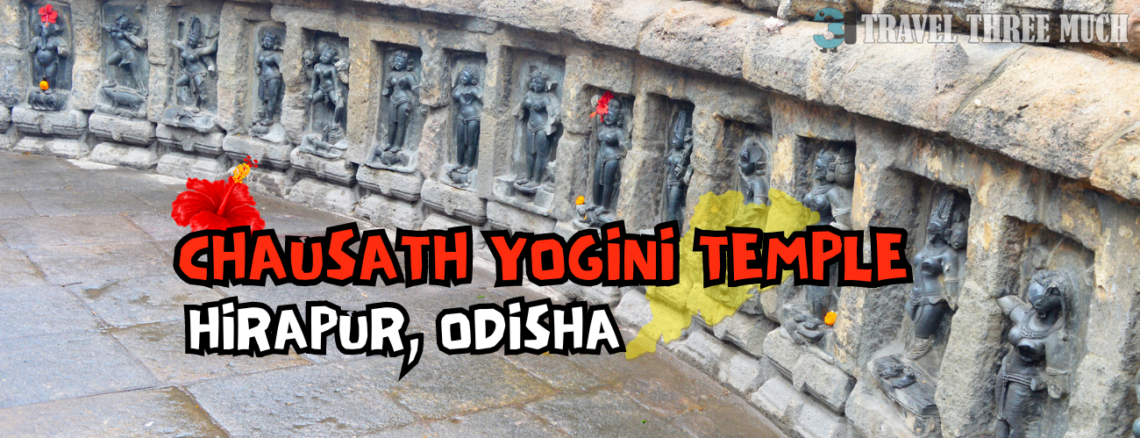
Chausath Yogini Temple: Hirapur’s 64 Goddesses
In February 2020, we visited Hirapur, a serene village located approximately 20 km outside of the bustling city of Bhubaneswar in the Indian state of Odisha.
Our primary destination was the enigmatic Chausath Yogini temple, a remarkable testament to ancient Indian architecture and religious devotion. This temple, dating back to the 9th century CE, is shrouded in mystique, with its circular layout, divine deities, and a unique connection to Hindu mythology.



The Chausath Yogini temple, also known as the Hirapur Yogini Temple, stands as a remarkable relic of India’s rich heritage. Constructed during the rule of the Bhauma-Kara dynasty, this temple is believed to be one of the four Yogini temples in India, the others being in Ranipur-Jharial, Bheraghat, and Khajuraho. Its antiquity is evident in its very structure, which has withstood the test of time for over a millennium.
The most striking feature of the Chausath Yogini temple is its circular design, a unique architectural marvel in this part of India. As you approach the temple, you’ll notice its circular walls adorned with niches, each harboring an intriguing deity.
These deities, known as Katyayanis, are a representation of the fierce aspect of the Hindu goddess Durga.
They are often associated with the legend of Goddess Durga’s battle with the formidable demon Mahishasura. The temple’s outer walls, graced by these Katyayanis, evoke a sense of spiritual protection and strength as they surround the sacred space within.

Upon crossing the threshold of the temple, you are met with a passage that leads you deeper into the sanctum. As you walk further, you will reach the temple’s inner sanctum, which is also circular in shape.
Here, the walls are adorned with niches housing an assembly of 60 yoginis, female deities known for their mystical and powerful presence.
The simplicity of the niches and the ancient stone walls creates an aura of purity and antiquity.
At the center of the circular sanctum lies a small stone platform, a space dedicated for offerings and prayers.

This central square sanctum is unique in that it is graced by the presence of four yoginis and bhairavas. The four bhairavas represent the male counterparts to the yoginis, adding a harmonious balance to the divine assembly within the temple.
The Chausath Yogini temple, a treasure trove of ancient heritage, is under the careful maintenance and protection of the Archaeological Survey of India.
Their dedication to preserving this historical site ensures that generations to come can continue to marvel at the architectural excellence and religious significance of this unique circular temple.
One of the distinctive aspects of the Chausath Yogini temple is the offering of fish to the deities.
This practice is deeply rooted in the local culture and is considered a form of reverence to the goddesses.

The fish offerings are made to please the deities and seek their blessings. While it may seem unusual to some, this tradition underscores the rich tapestry of Indian religious customs and the diversity of offerings made to appease the divine.
The circular layout, the divine presence of Katyayanis and yoginis, and the historical significance of this ancient temple make it a must-visit destination for anyone interested in India’s rich cultural and religious heritage.
The Chausath Yogini temple encapsulates these elements beautifully, inviting travelers and devotees to explore the mystique of a bygone era and experience the divine in a tranquil and picturesque setting.
Beyond the temple’s sacred precincts, a tranquil lake adds to the allure of the Chausath Yogini temple. The temple’s location is not only historically significant but also scenic.

The presence of the lake provides a serene backdrop, making it a truly mystical setting where one can connect with the divine while immersed in nature’s beauty.

The temple’s enduring charm is a testament to the timelessness of India’s cultural treasures.
It continues to be a place where the past and the present seamlessly converge, inviting all to explore the depths of faith and history.



